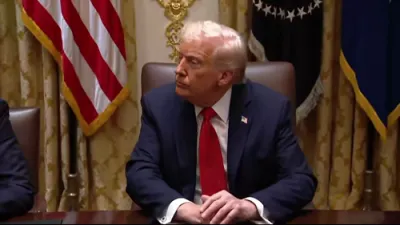טראמפ: דאס אויסראטן חאמאס וועט אנגיין אויב זיי זענען א סכנה פאר א וויילענט ריספאנס
President Donald J. Trump issued stark warnings directed at Hamas, saying the group “will be eradicated” if it continues its attacks and vowing a swift and forceful response. Speaking in a public remark, Trump characterized recent killings as unacceptable and said the United States—or its partners—would “straighten it out, very quickly, and pretty violently” if the violence persisted.
The remarks, which use uncompromising language about the potential use of force, serve as a clear escalation in rhetoric. Trump framed the statement as a consequence-driven stance: continued attacks, he said, would prompt decisive action intended to remove the threat posed by Hamas.
Key points from the statement:
- Trump threatened eradication as a possible outcome if Hamas continues its actions, repeating the phrase “They’ll be eradicated.”
- He referred to recent killings as a motivating factor and warned that responders would act “very quickly” and “pretty violently” should the attacks continue.
- The language frames force as a last-resort consequence tied to compliance or continued aggression.
Implications and context
The president’s remarks underscore an administration posture that stresses deterrence through the threat of significant military response. Such rhetoric can be intended to deter further attacks by raising the perceived cost to the adversary, but it also carries the risk of heightening tensions and narrowing diplomatic options. Strong public threats may complicate negotiations, affect allied coordination, and raise humanitarian and legal concerns regarding proportionality and civilian protection.
Analysts and observers will likely weigh several questions in the wake of Trump’s comments: whether the rhetoric signals imminent operational measures or is primarily intended as pressure, how allies and regional partners will respond, and what safeguards will be emphasized to minimize civilian harm should force be used. Humanitarian groups and legal experts often call for clarity around rules of engagement and measures to protect noncombatants when leaders signal violent remedial action.



































